The Forge

Tibbalds
Richard Crutchley and Maria Hadjinicolaou, Associates at Tibbalds, review the Forge residential scheme on a former bus garage site in east London and how it creates an attractive and legible environment.
Hidden behind the vibrant Green Street in Newham in east London, lies the Forge development on the site of a former bus garage, which closed six years ago. Surrounded by two-storey Victorian houses and post-war housing estates, the new development provides a range of terrace housing as well as a strategically positioned tower.
Developed by Telford Homes and designed by RMA Architects, 192 new homes have been built on a 0.9 hectare site. The mix of apartments and houses, with 38 per cent family housing and 35 per cent affordable housing, meets the London Space Standards. With the site’s good access to public transport, close to an underground station and bus services, very limited parking has been provided.
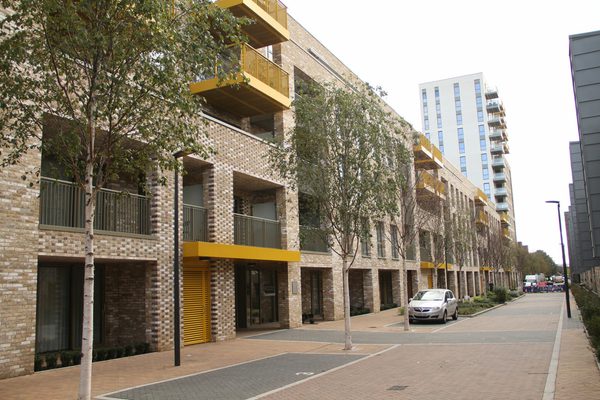
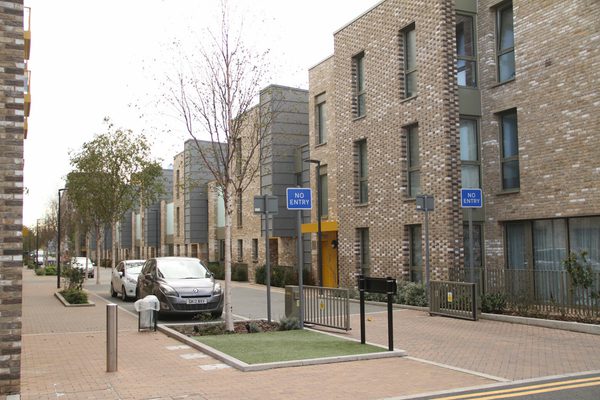
Connecting: A new pedestrian/cycle route links neighbourhoods
The scheme is arranged around a new street running north-south. At 12 metres wide, Albion Way seems well proportioned, and the scale of the housing on either side is well balanced. With few vehicles allowed to use it and subtle landscaping, a quiet, pleasant route through the development has been created.
Legibility: structure and pattern create a clear layout
Albion Way is flanked by three storey housing on the west side and five on the east facing on to the street. The east side ends with a 14-storey tower, carefully located to overlook Priory Park. The location of the tall building acts as a clear marker for movement to and through the site and provides a clear sense of orientation within the development.
A number of stepped down finger blocks running east-west are at the back of the eastern block around private courtyards.
The street elevations have a regular rhythm of openings with deep setbacks, projecting balconies or bay windows, highlighted by changes in the material and colour. This provides visual interest and helps to break down what might have been a long, dominant elevation.
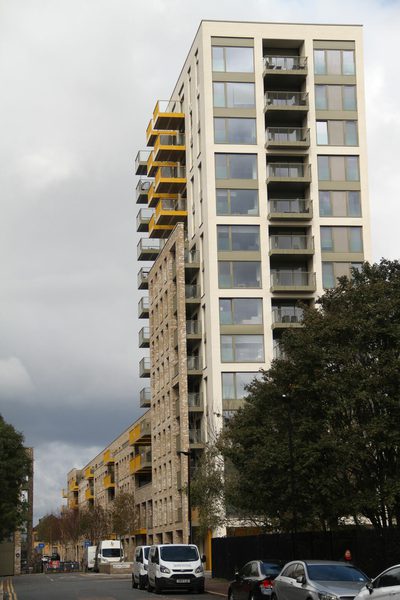
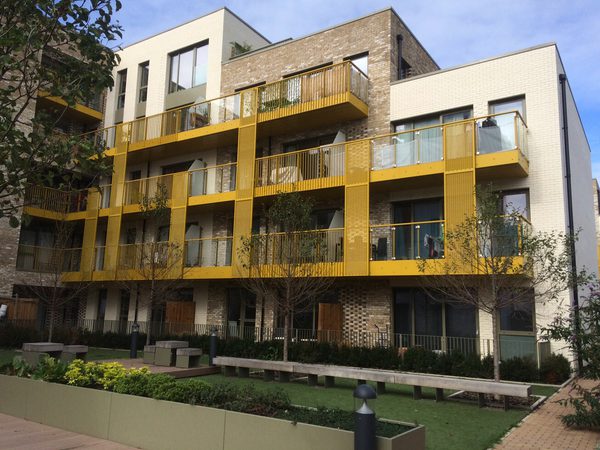
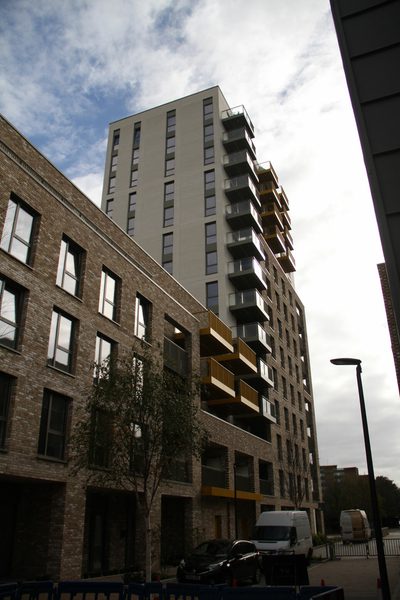
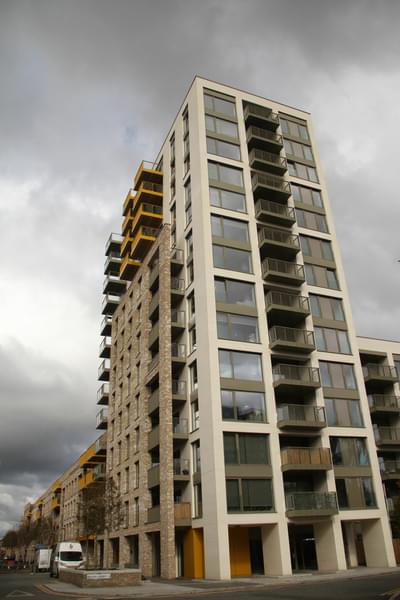
A simple palette of materials creates an engaging streetscene
The colour palette enlivens the street scene. The combination of standard stretched bond brick and light buff and white colour brickwork alongside olive grey and honey yellow painted metal work creates interest.
The use of materials works less well where the tower meets the five-storey block. In addressing the height difference, the pattern of brickwork and colour of balconies has less clarity, creating a curious juxtaposition. From certain angles, particularly the south, the wall seems to be freestanding, stitched together with jutting balconies and unclear colour choices.
The timber fencing that surrounds the southern block is also at odds with the general high quality of the material choices.
Dealing with privacy in high density development
The western terrace does not have any direct visual link to the street. All the openings have obscure glass although the projecting bays offer oblique views down the street. The narrow plots mean that the houses have outdoor amenity space at first floor level, whilst directly below this is ground floor storage space enclosed with metal gates allowing views in from the street. These are designed as garages but appear a little too small for a car, and most are used for storage; one resident has used fabric to blank the opening and shut out the prying eyes of the public.
Across the street, the ground floor façade is set back, creating small semi-private spaces with multiple doors to single residential units. It creates an uneasy relationship with the public realm; it seems unlikely that a resident would use it as amenity space. It may be that the very young planting along the edge of the street will, once mature, form an attractive boundary and give some form of privacy.
This is a welcome development in an area that badly needs it, offering an attractive, legible environment with well-considered massing. The mixed tenure and housing types blend together indistinguishable in its form and architecture. The design, public realm and materials uplift the area and create a positive example for future developments to come.
Read the original article on Placemaking Resource.
Related Updates
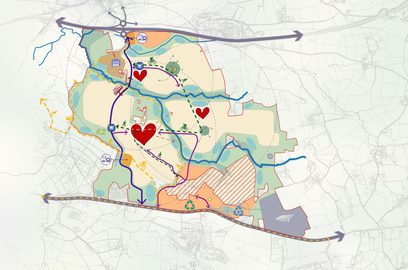
Marlcombe, East Devon selected as one of the New Towns

Tibbalds
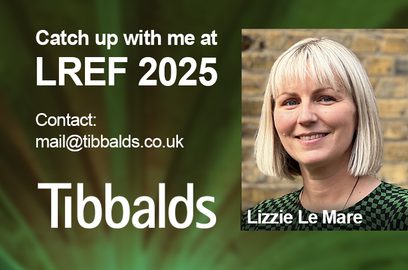
Lizzie Le Mare attending LREF 2025

Tibbalds
Newham Council’s 50% affordable Carpenters Estate regeneration gets underway

Tibbalds
Stay In Touch
Sign up to our Newsletter
Subscribe to our newsletter to receive updates about making people friendly places.